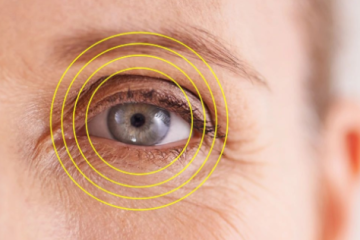Brushing your pet’s teeth might not be the first thing that comes to mind when you think about their health—but it should be. Dental hygiene plays a vital role in your dog or cat’s overall well-being. Just like humans, pets can suffer from gum disease, tooth decay, and bad breath if their oral care is ignored. Whether you’re a new pet parent or a seasoned one, maintaining your furry friend’s dental health is one of the most important—and often overlooked—parts of daily care. If you’re passionate about topics like this and want to share your insights, we invite you to write for us.
Why Oral Care Matters For Pets?
Many pet owners assume that giving their dog a chew toy or offering dental treats is enough. While these are helpful additions, they don’t replace the benefits of regular brushing. Bacteria from leftover food particles can build up in your pet’s mouth, leading to plaque and tartar. If untreated, this buildup causes gum inflammation (gingivitis), which may evolve into periodontal disease—a painful and irreversible condition that affects both teeth and internal organs.
Poor dental health doesn’t just cause bad breath. It can lead to infections that spread to the liver, kidneys, and even the heart. Fortunately, these issues are largely preventable with a consistent and proactive oral care routine.
Choosing The Right Tools
To brush your pet’s teeth effectively, you’ll need the right tools. Never use human toothpaste, as it can be toxic to pets. Instead, choose a pet-specific toothpaste with flavors like poultry or peanut butter to make the experience more enjoyable. Pair it with a pet toothbrush or finger brush, depending on your comfort level and your pet’s size.
Start slow—let your pet sniff and lick the brush and toothpaste to get used to it. Over time, increase the brushing duration. Ideally, you should brush your pet’s teeth at least three times a week, though daily brushing yields the best results.
Making Brushing A Routine
The key to success is consistency. Incorporate brushing into a routine your pet is already comfortable with, such as after walks or before bedtime. Offer praise and treats afterward to create a positive association. If your pet is resistant at first, don’t force the process—build up slowly to reduce stress for both of you.
Some pets may never enjoy brushing, but patience pays off. A little daily effort can prevent painful dental procedures down the road and contribute to a longer, healthier life.
If you’re a content creator looking to spread awareness about pet care and oral hygiene, consider contributing through a guest post service. It’s a meaningful way to help educate fellow pet parents.
Signs Your Pet May Need Dental Attention
Even with regular care, it’s essential to monitor your pet for signs of dental trouble. These include:
- Persistent bad breath
- Difficulty eating or chewing
- Excessive drooling
- Red or bleeding gums
- Loose or missing teeth
If you notice any of these symptoms, a vet visit is in order. Professional cleanings under anesthesia may be needed to remove hardened plaque or treat advanced gum disease.
As you become more familiar with your pet’s dental needs, you’ll better recognize changes in behavior or appearance that could signal problems. This proactive approach is key to preventing more serious conditions.
Alternatives To Brushing
Although brushing is the gold standard, there are other ways to support your pet’s dental health. Dental chews, water additives, and specially formulated dry foods can reduce plaque and freshen breath. However, these should be viewed as supplements, not replacements.
Veterinarians often recommend a combination of home care and periodic professional cleanings. You can discuss options tailored to your pet’s age, breed, and health status at your next vet appointment.
If you’re exploring pet-related content and seeking exposure through quality platforms, a guest posting opportunity can help you reach like-minded audiences who care about animal wellness.
Final Thoughts
Your pet depends on you not just for food and affection but for overall care—including dental hygiene. Taking a few minutes each day to brush their teeth can prevent pain, illness, and expensive treatments later on. With the right tools, patience, and consistency, you can protect their smile for years to come. Love writing about pet care? Don’t hesitate to submit a guest post and share your voice with others. We’re always open to hearing new insights from passionate pet owners.



